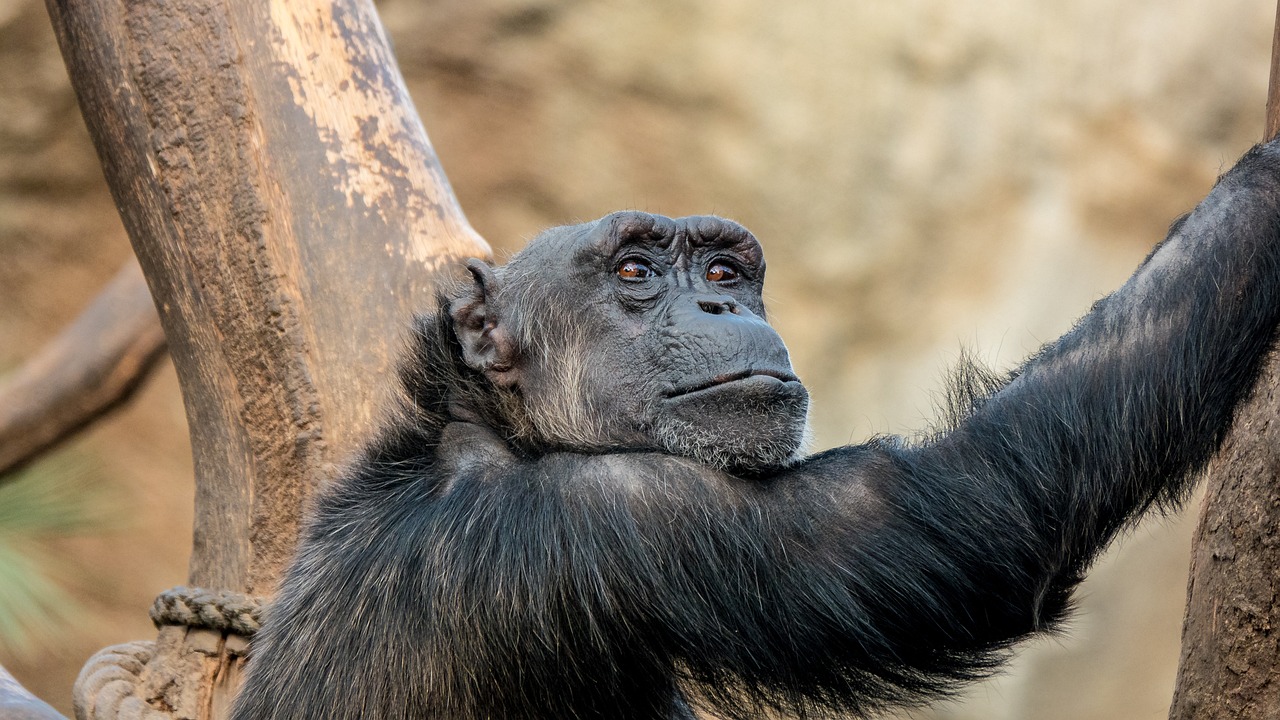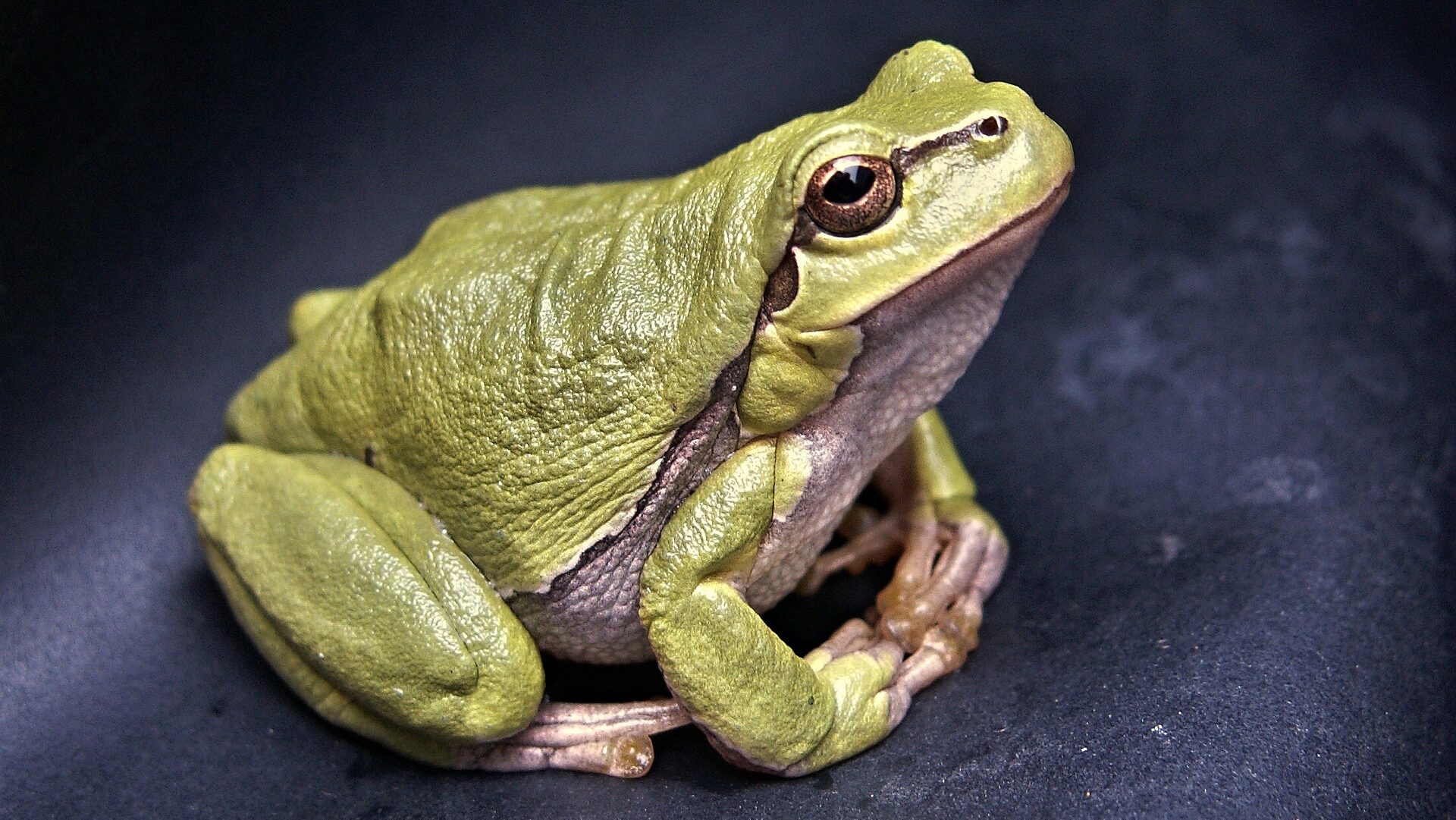Reading Time – 8 minutes, Difficulty Level 2/5
Evolution is a fascinating process. The slow progression of change over generations across unfathomable periods of time has allowed life on Earth to thrive in every habitat imaginable, from the freezing polar circles to the boiling waters around hydrothermal vents.
Throughout these habitats animals occupy ecological niches; essentially job titles for roles in an ecosystem. These could be scavengers, grazers, arboreal foragers, social predators or any of dozens more places in the food chain. Certain adaptations prove to be advantageous for particular lifestyles, such as grasping hands for climbing or webbed feet for swimming, so those features tend to repeat themselves when the environmental pressures require them. Even things seemingly universal as eyes have multiple origins throughout the animal kingdom.
Sometimes unrelated animals specialise for a particular niche so symmetrically that they end up mimicking one-another’s body plans and behaviours. Here are ten examples, living & extinct, of some of the most striking examples of this intriguing phenomenon, known as convergent evolution.
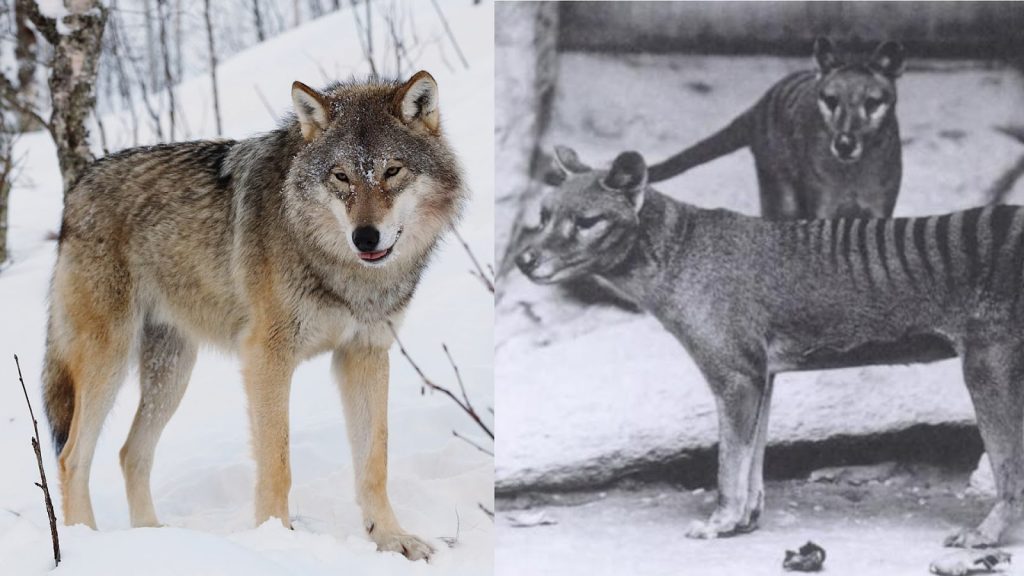
Perhaps the most famous example of convergent evolution is that of the Wolf and the now extinct Thylacine, a marsupial which once lived across Australia. Both are pursuit predators, hunting in patchwork forest environments. Though Thylacines lacked the size or co-operative hunting tactics that Wolves use to bring down large prey, they were considered a threat to livestock by farmers, in part thanks to their resemblance to predators from elsewhere in the world. Through a combination of hunting, habitat loss and disease they became extinct in the 1930s.
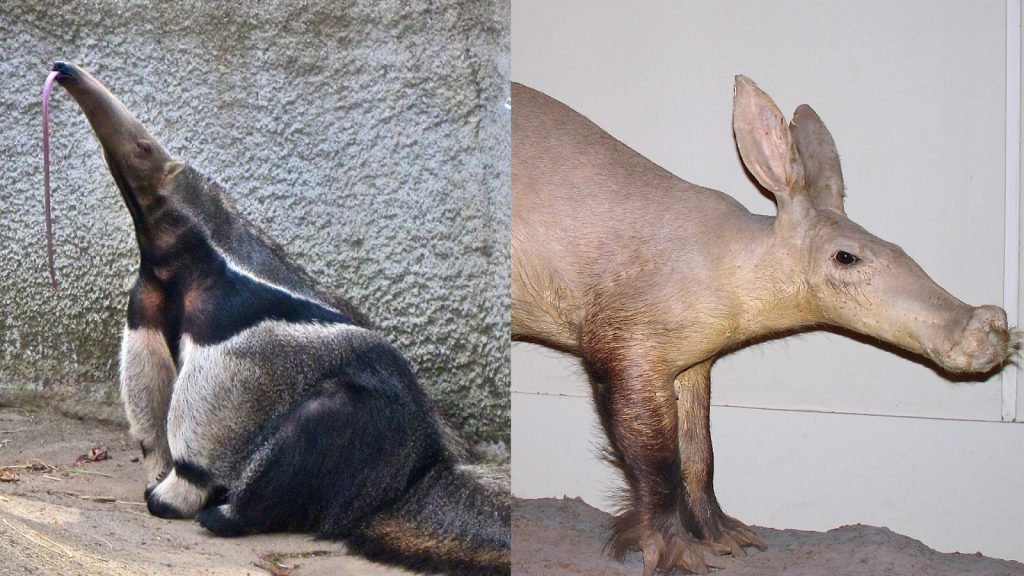
Despite sharing long snouts, powerful claws and a taste for nesting insects, Anteaters and Aardvarks are not at all closely related. Anteaters belong to the Xenarthra, which includes Sloths, Armadillos and extinct giants like Ground Sloths and Glyptodonts. Aardvarks are the last surviving representatives of their clade, but their closest living relatives include such a diverse range of animals as Tenrecs, Elephants, Hyraxes and Manatees.
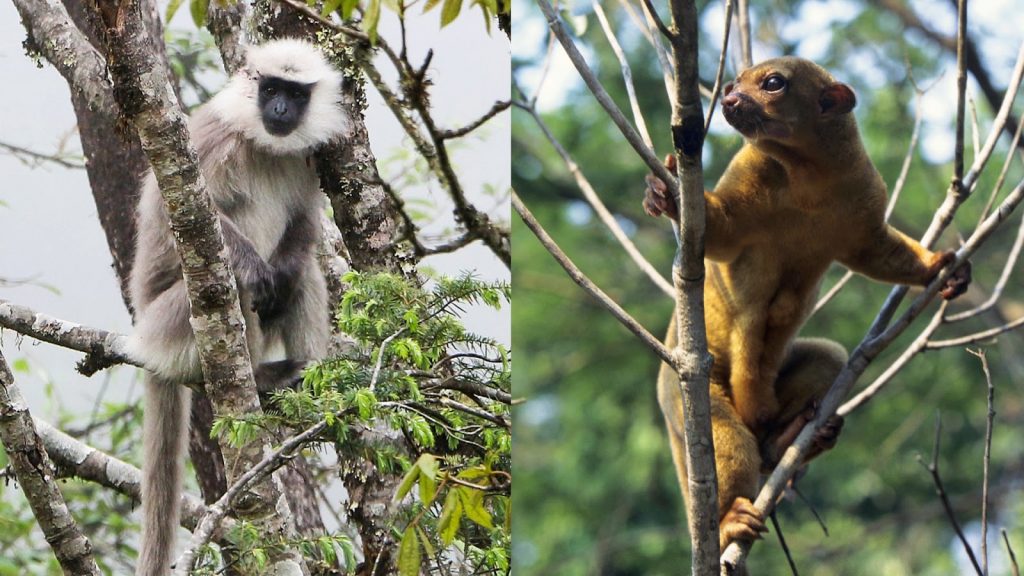
With its forward-facing eyes, round ears, prehensile tail and fruit-based diet, you could be forgiven for thinking the Kinkajou of South America was a species of Primate. Incredibly this Monkey mimic is a Procyonid; a carnivoran closely related to Raccoons and Coatis. This odd little mammal avoids competition with the Monkeys it shares its habitat with by being mainly nocturnal.
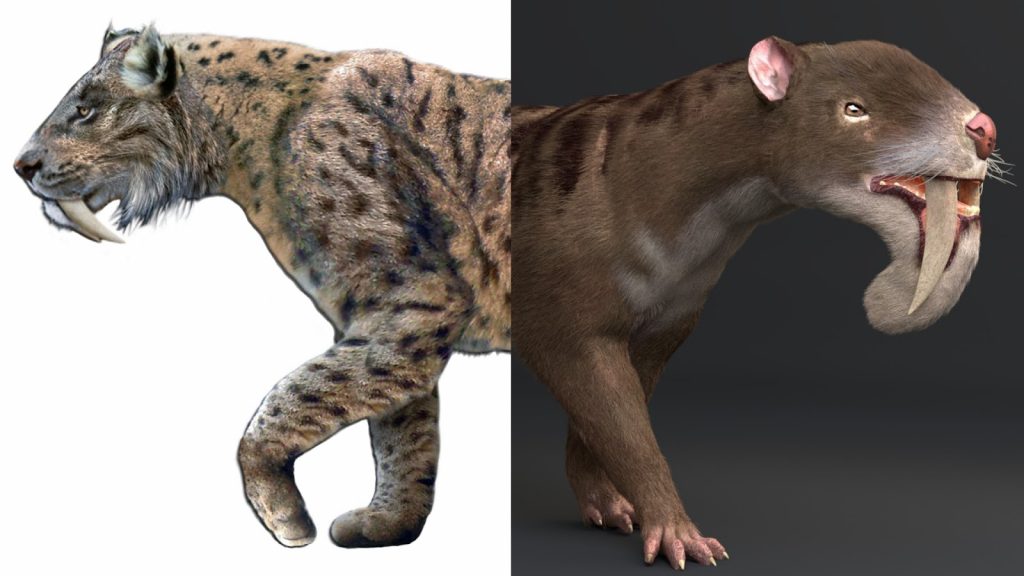
The Sabre-Toothed Cat Smilodon is famous for its fearsome canines, but cats weren’t the only animals to land on this killing technique. Many other mammals and mammal ancestors evolved their own dental daggers, including the peculiar Thylacosmilus of Argentina. This Jaguar-sized oddity was a Sparassodont; a lineage of mammals related to marsupials, who throughout their history also converged on body plans similar to Hyenas and Weasels.
Sparassodonts were among South America’s dominant mammal predators for millions of years, but climate change and competition from Cats, Bears and Dogs caused their extinction around 3 million years ago.
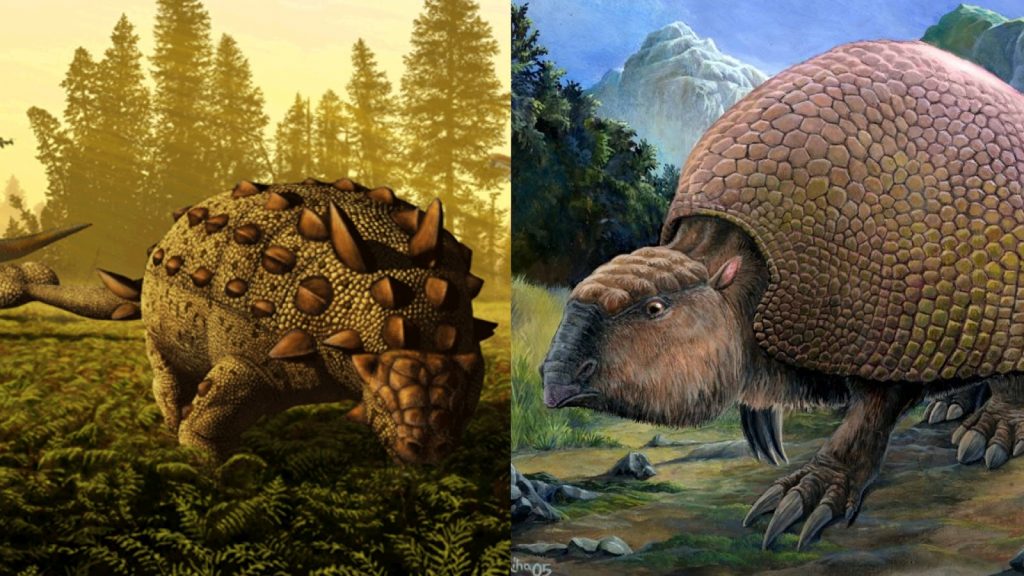
Defence against predators is an important part of survival, whether using camouflage, speed or physical defence. The Ankylosaurs, a clade of herbivorous Dinosaur, and the Glyptodonts, gigantic relatives of modern Armadillos, leaned heavily into physical defence. Their heads and backs were reinforced with thick, bony armour, and several species in both groups grew mace-like tail clubs.
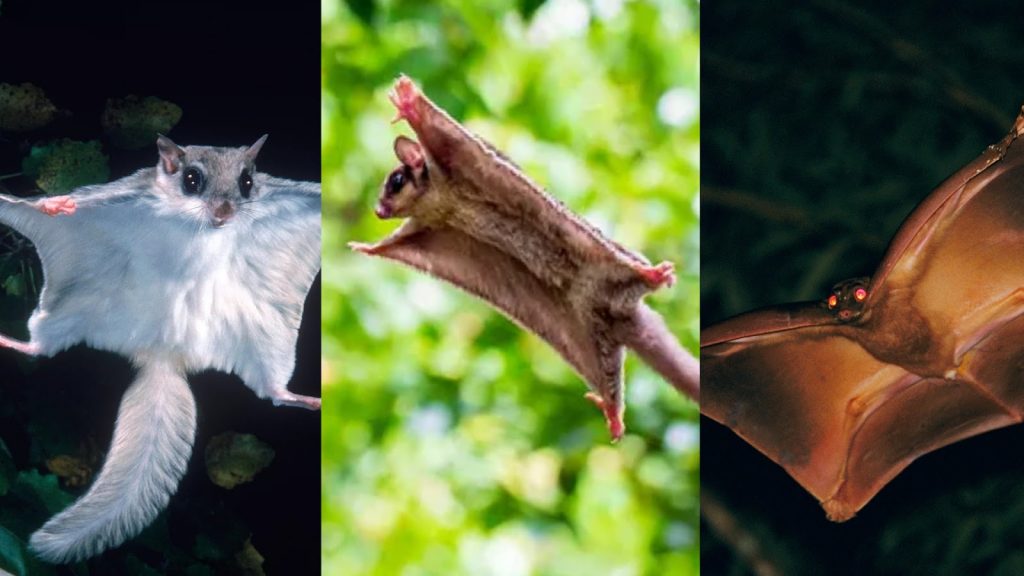
Our first three-part convergence! You may already be aware of Flying Squirrels and Sugar Gliders; rodents and marsupials respectively, who have separately evolved webs of skin between their limbs for gliding. However the most capable of all gliding mammals are the Colugos of South-East Asia, sometimes called Flying Lemurs. Though distantly related to Rodents and Primates, Colugos are a truly unique order of mammals who are still very poorly understood.
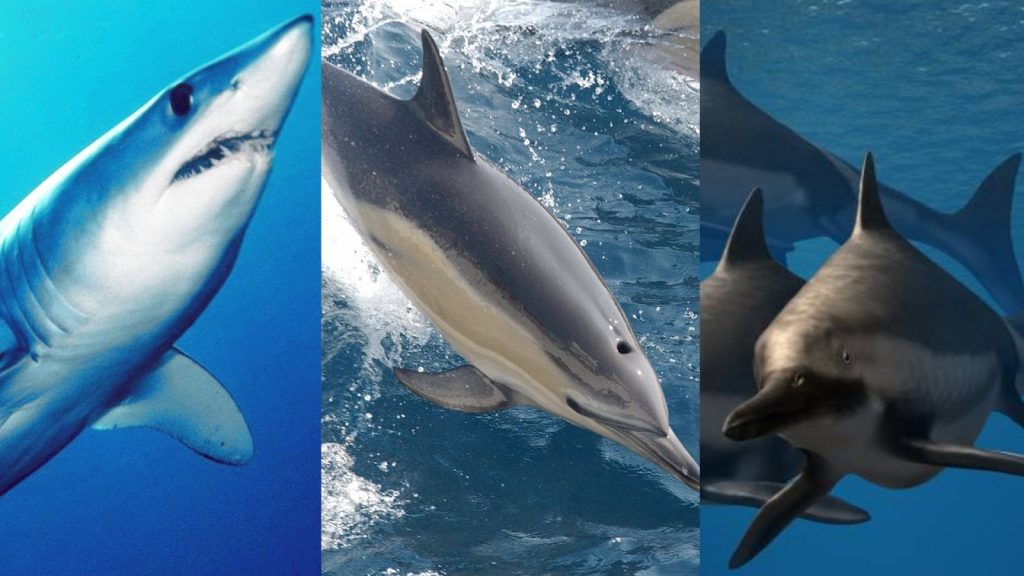
Water imposes physical demands on animals which have naturally resulted in great similarities between different aquatic groups. The now extinct Ichthyosaurs began their time in the sea as small, crocodile-like reptiles, and Whales started out as carnivorous hoofed mammals (yes, hoofed mammals, you read that right). Over generations the demands of being high-speed aquatic predators led these animals to arrive at a shark-like body plan, with high dorsal fins, crescent shaped tails and streamlined bodies.
Curiously all three groups have also occupied the niche of giant bulk-feeders, in the case of the Whale and Basking Sharks, Baleen Whales like the Blue and Humpback, & colossal Shastasaurs.
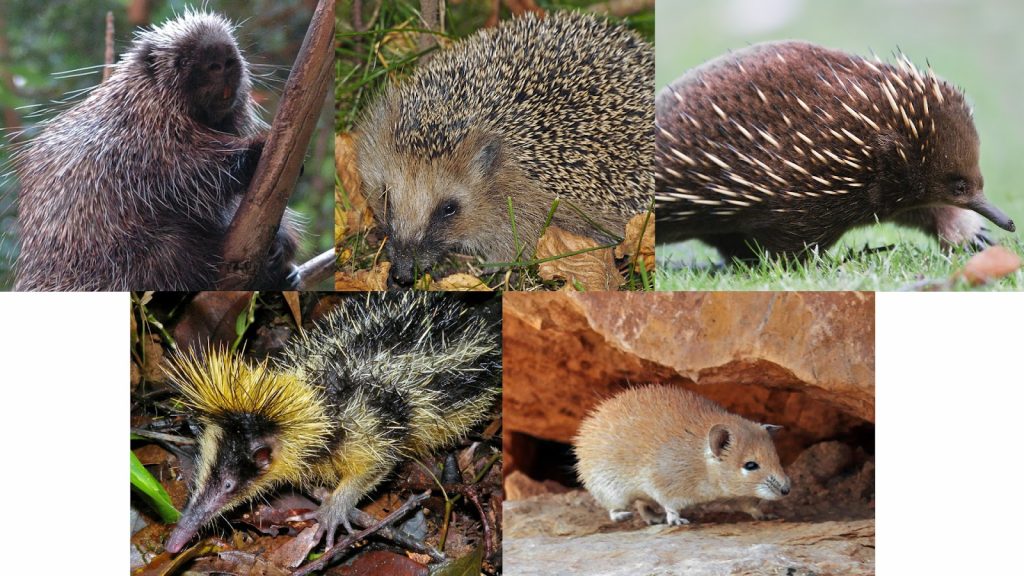
Stepping it up even more, a five-way convergence! These five groups of small mammals, which includes such disparate clades as rodents and monotremes, have independently modified their hair into protective spines. Despite these affinities, each group’s spikes have totally different structures and capabilities. For example porcupine quills are barbed and can be shed, while Hedgehog spines are smooth and fixed into their skin with muscles that allow them to be flexed outwards. There are even species of Tenrec known as Hedgehog Tenrecs for their uncanny similarity to the garden critters with whom they share only the remotest ancestry.
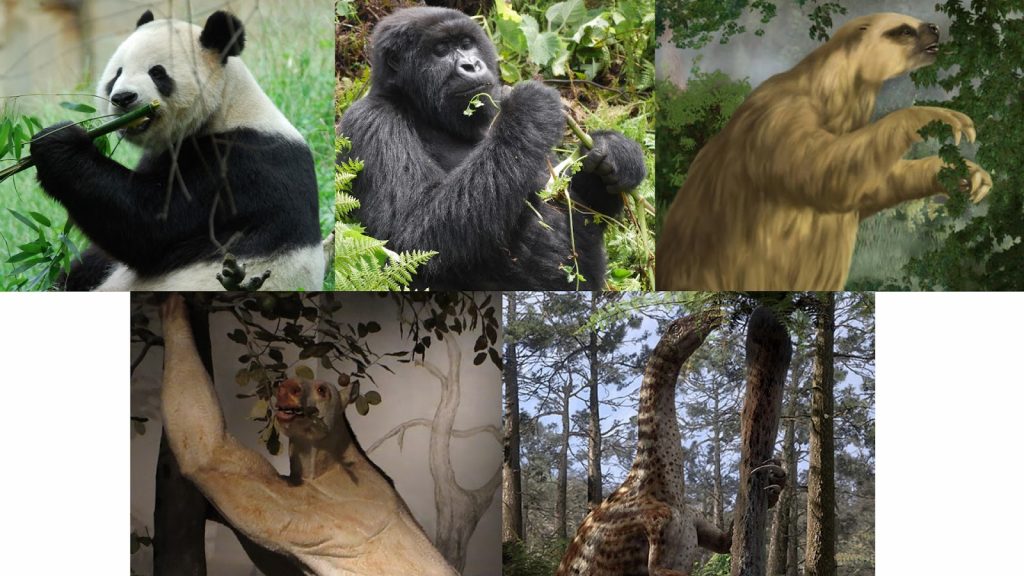
My personal favourite example of convergent evolution. A five-way convergence between herbivorous megafauna landing on the same incredibly specific method of feeding over the course of more than 130 million years. All of these animals have short, robust hind legs & broad pelvises, which allow them to sit or rest on their haunches and use their long arms and well developed claws or hands to reach and grab at vegetation.
Three of these groups, the Gorillas, Ground Sloths and Chalicotheres, also evolved knuckle-walking independently, while both Pandas and Therizinosaurs are herbivorous descendants of carnivorous ancestors.
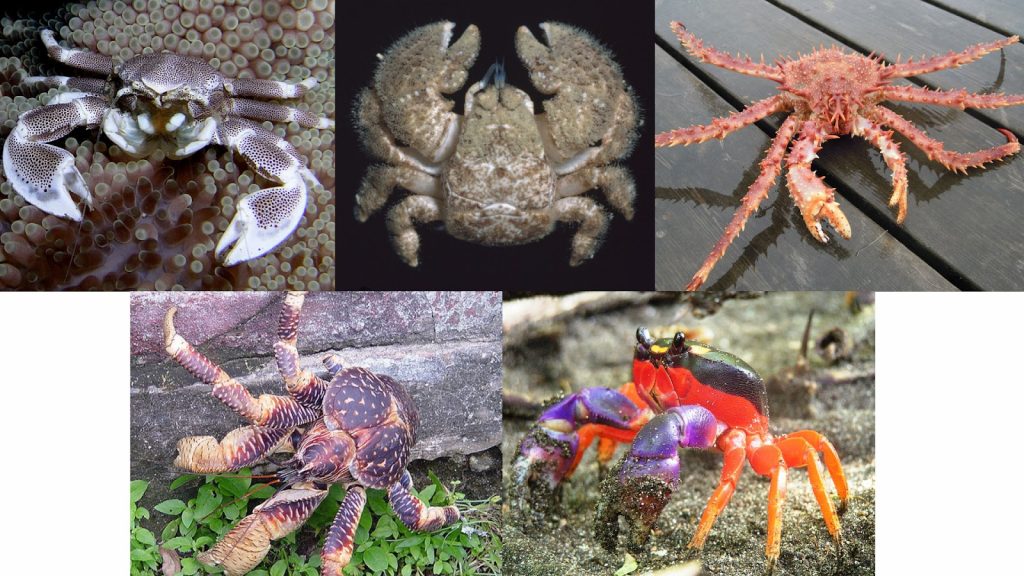
The process which took the internet by storm and was launched into meme status. Across the course of hundreds of millions of years, at least five separate, distantly related families of crustacean have independently evolved the crab body type, with wide, flat shells and grasping pincers. It seems almost inevitable then that more crab mimics will evolve in the future, scuttling their way to dominance in the ruins of mankind’s empire.
Further Reading
Trevor Pearce – Convergence & Parallelism In Evolution: A Neo-Gouldian Account
Raghavendran Partha, et al – Subterranean mammals show convergent regression in ocular genes and enhancers, along with adaptation to tunneling
Yang Liu, et al – Convergent sequence evolution between echolocating bats and dolphins
A lifelong natural history enthusiast, Dane has built an online following recreating prehistoric life through animation, & is now studying for a Natural Sciences degree while participating in STEM ambassadorship & climate activism.

